Book your survey today!
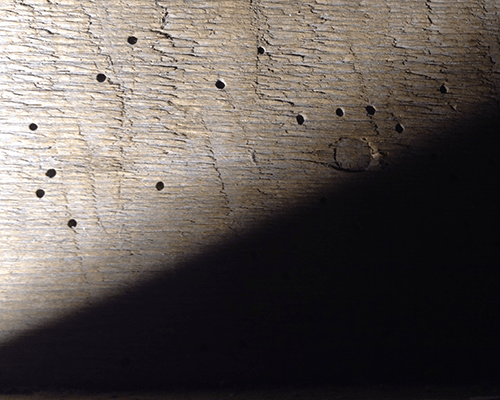
Woodworm treatment can be very successful if the problem is identified as quickly as possible and action is taken relevant to the specific cause of the problem.
What is Woodworm?
Contrary to the name, the effects of Woodworm are not the result of a worm but a Beetle. Various species of Beetle will lay their eggs within the cracks of your wooden surfaces, floorboards, household beams, and even your furniture.
From there, the eggs hatch and larvae will burrow into the wood remaining there for up to five years, with the potential to cause untold damage.
LifeCycle of Woodworm

Laying eggs
The process starts with a female Beetle, who generally lives for around 14 days, laying its eggs just below the surface on a piece of wood. They will find a crack, crevice or break in the wood that will ensure their eggs will be safe for long enough to hatch. There can be anything up to 50 eggs from one female.
Hatching
Over the next two weeks, the eggs will hatch downwards, and the larvae will emerge, typically around 2mm in size and start to burrow deep into your wood.
They will continue to burrow extensively, which, over the course of two to five years, will cause some extensive damage, weakening the structure of your wood.
As they make their way through the wood, they produce a dust-like substance called frass, the waste produced by the Woodworm as it progresses through your wood.

Pupate
As the larvae/worm get near the end of their journey, they make their way closer to the surface of the wood. They will create a pupal chamber where they will finally grow into a fully formed Beetle.
Becoming a Beetle
The final step in this rather unhelpful existence is to eat away the last barrier of timber that creates a small circular hole in your wood. Unfortunately, the damage is done by this stage, but this small circular hole is usually the first sign you have Woodworm.
The beetles will emerge and start flying away; at this point, they will cause no more problems for your wood. The primary season for beetles taking to the sky is May to September. As aforementioned, the female will live for around twelve to fourteen days and the male for three to five days.
Their sole purpose for the male at this point is to mate with as many female partners as possible so they can start the whole process again.
What does a woodworm look like?
The likelihood is you will never see the larvae, which is the problem. They are busy burrowing their way into your wood, causing untold damage. However, the larvae are around 2mm long and are creamy in colour.
Generally, the first sign you will notice that you have a problem with Woodworm is the exit hole from the fully matured Beetle. This is why you must act as quick as possible when you see this appear.
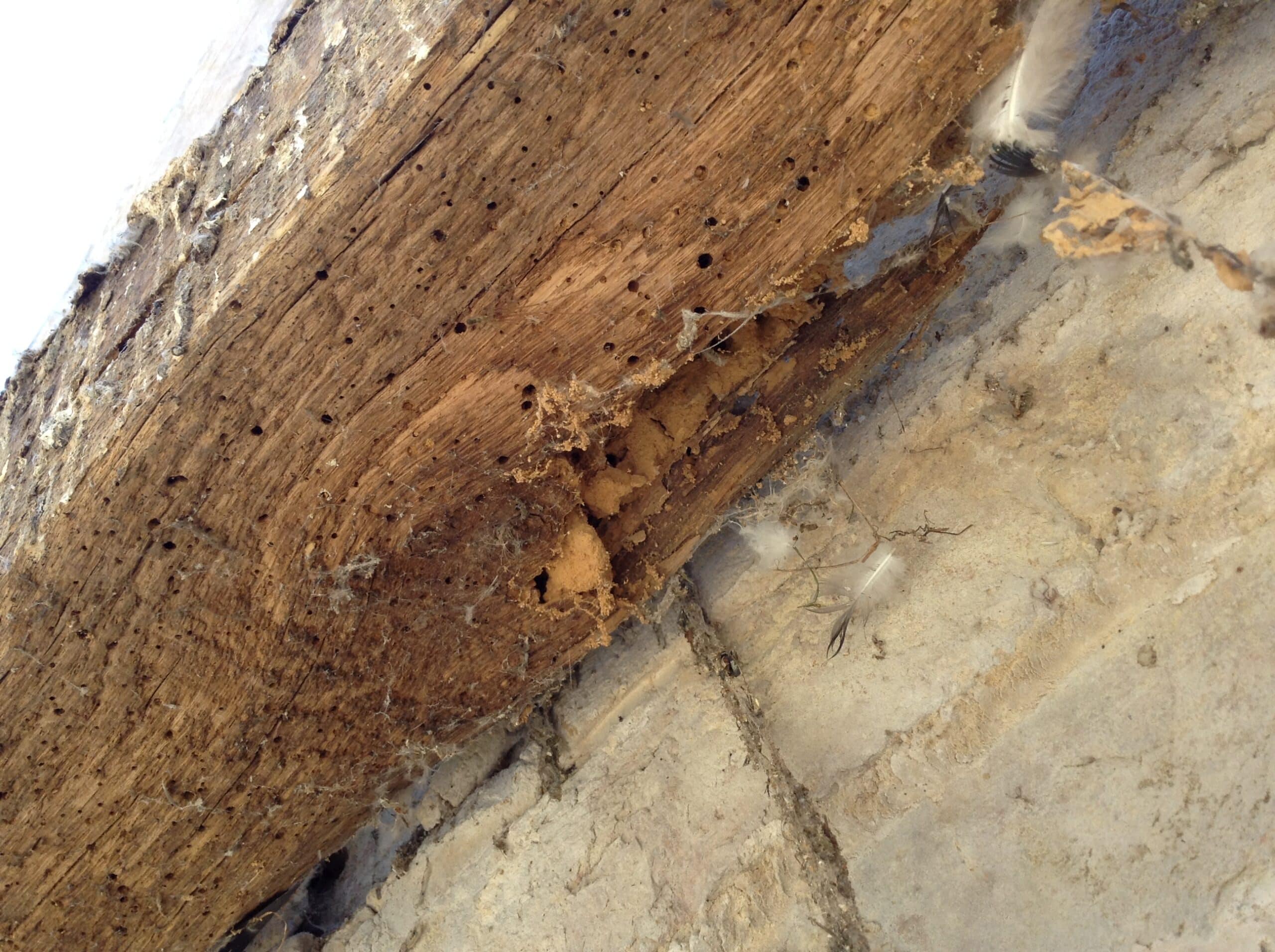
Types of Beatles that produce Woodworm
There are four main culprits when it comes to Beetles that create the disruptive Woodworm.

Common Furniture Beetle (Anobium punctatum)
- 2.5 - 5 mm long
- Dull reddish to dark brown
- Grooves running the length of the body
- The thorax hides their head
- Source - https://www.nhm.ac.uk/take-part/identify-nature/common-insect-pest-species-in-homes/furniture-beetle-anobium-punctatum-identification-guide.html
Death Watch Beetle (Xestobium rufovillosum)
- 5-9mm long
- Part of a family of Beetles generally found across Europe; the Death Beetle is located in England
- Light brown
- Cylindrical bodies and heads are characteristics of a wood-boring species.
- Feed on deadwood in their natural habitat but will feed on any wood when introduced to a dwelling
- Source - https://www.nhm.ac.uk/take-part/identify-nature/common-insect-pest-species-in-homes/death-watch-beetle-xestobium-rufovillosum-identification-guide.html

Powder-post Beetles (Lyctus brunneus)
- 4-5mm long
- Rang of colours from light brown to reddish-brown
- Boreholes tend to be 1.5mm - 2mm.
- Elongated and relatively flat
- The backplate is rectangular and darker than the wing case.
- The head is distinct from the other body parts, and the antennae are clubbed.
- Often arrive in the UK from tropical and subtropical regions on imported wood - the scourge of the woodyards and workshops.
- Source
House Longhorn Beetle (Hylotrupes Bajulus)
- 8-20mm long
- Brown to black in colour, but appears grey with the hair on the back of the Beetle.
- Larger exit holes - 6-10mm holes
- Prefer new wood
- It can take up to 10 years to emerge from the wood as Beetles.
- Source
Can Woodworm Spread?
The woodworm larvae have one purpose: to consume as much wood as possible until they pupate. They are not infectious; they will not spread to other bits of wood like dry rot might.
The larvae have found a wood they like to eat and, to that end, might not move onto an adjoining fresh piece of clean wood if it's not to their liking.
However, they will get through as much of the wood they are currently in before they emerge as a beetle. If that is a long piece of wood, like a beam, that will cause significant damage.
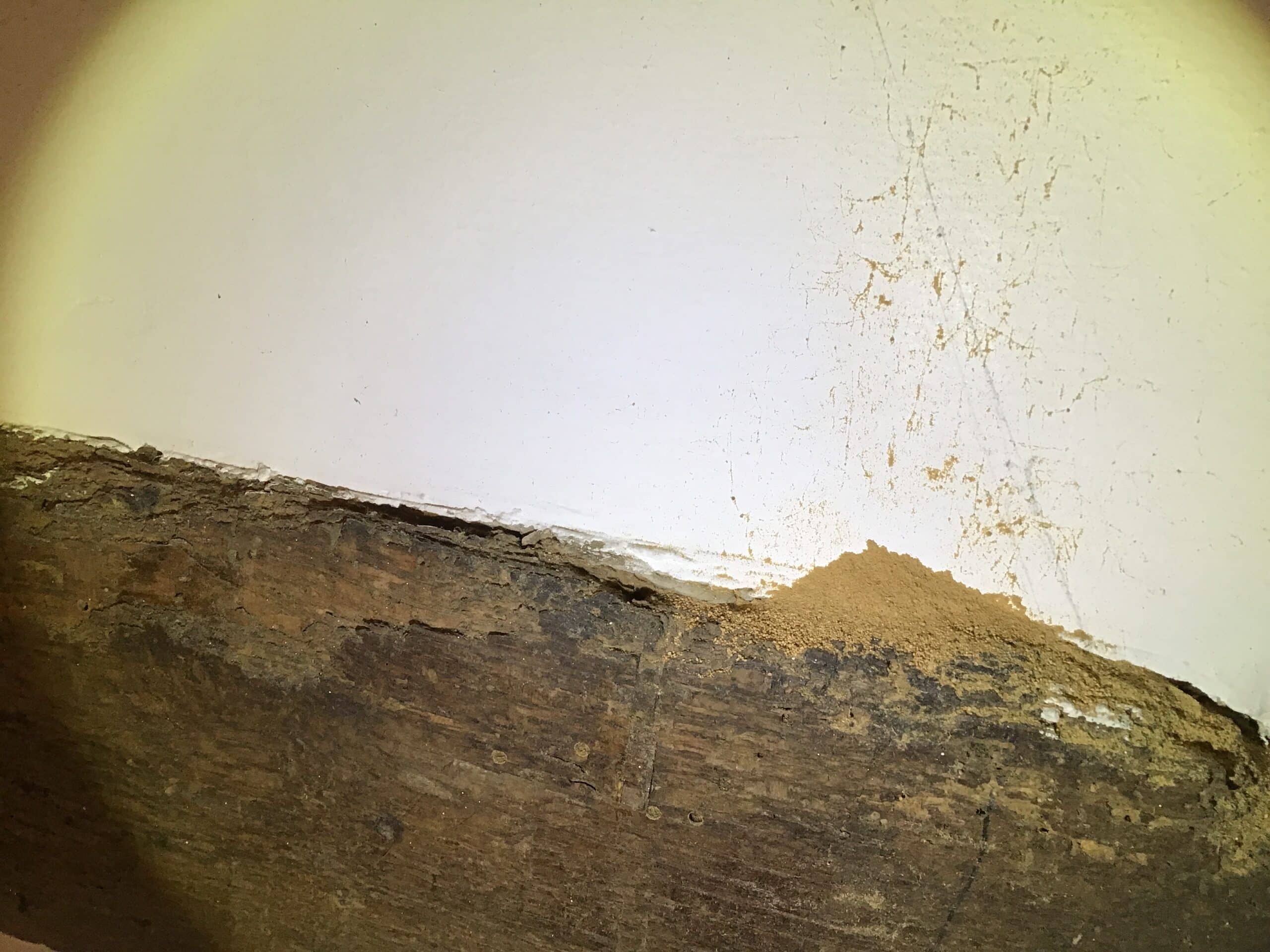
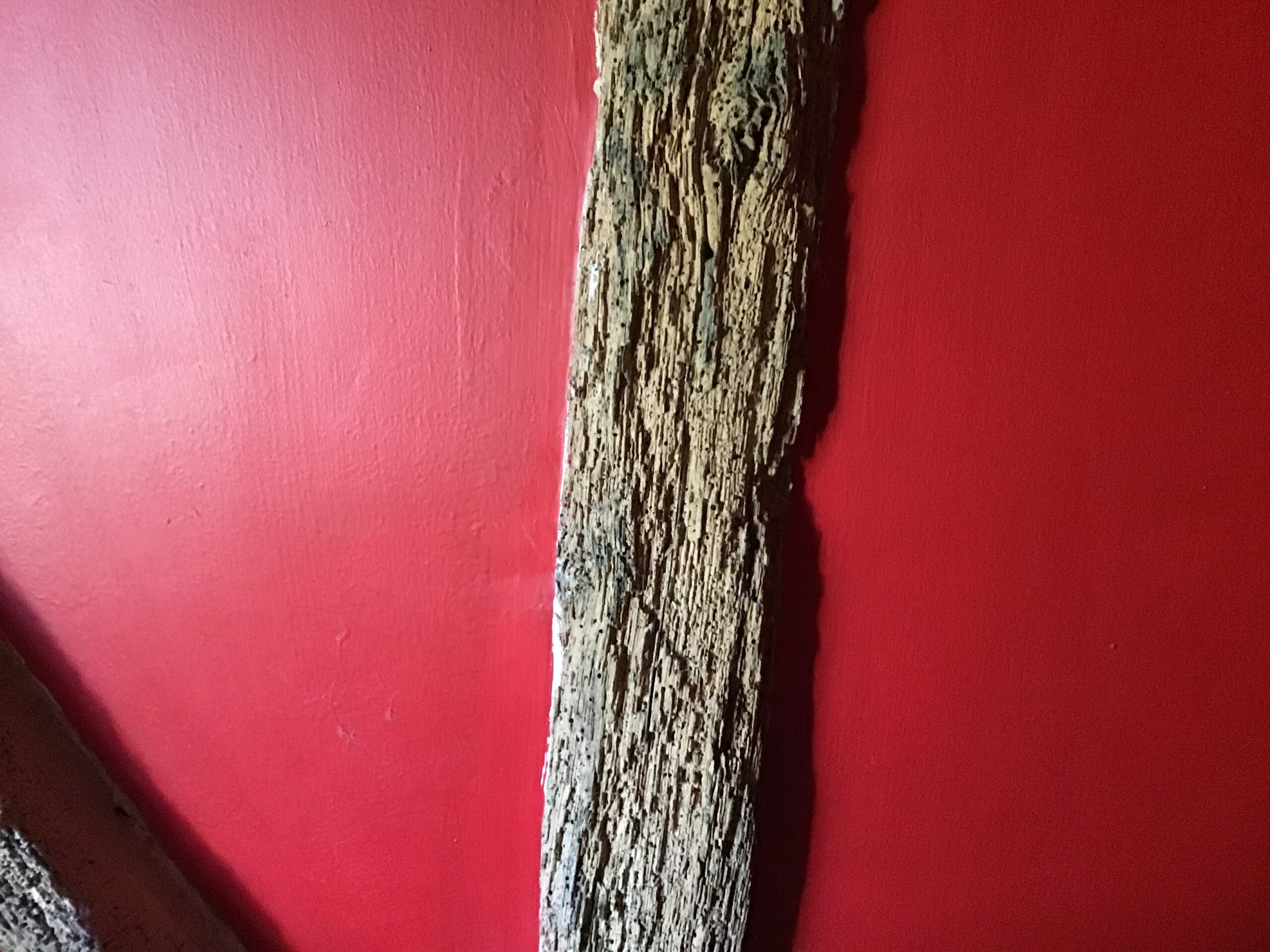
Recognising the presence of Woodworm
Identifying the effects of Woodworm is difficult as the main culprit is buried deep in your wood, out of sight for many years.
One sign will be the presence of frass, fine dust produced by the larvae as they bore through your wood. The problem with this is that to the uninitiated, this might not be fresh and could be many years old.
The other tell-tale sign is the exit holes. If you act quickly upon recognising the first hole, you might be able to prevent much more damage.
Other signs of Woodworm, although these are well into the process, are crumbly wood, dead Beetles around windowsills and the presence of predatory Steely Blue Beetles. These are the main predators for Common Furniture Beetles, so an increase in these might signal the presence of Woodworm.
Within the wood you engage with regularly, like floorboards, you might notice a weakening of the wood, which is something to investigate.
If you find any of these issues, the likelihood is Woodworm have already been attacking your wood, and it is time to call in the experts.
Where you might find Woodworm
As the name suggests, Woodworm can be found within any wood on your property. Anything from:
- Floorboards
- Beams
- Doors and frames
- Furniture
- Joists
- Wooden artwork
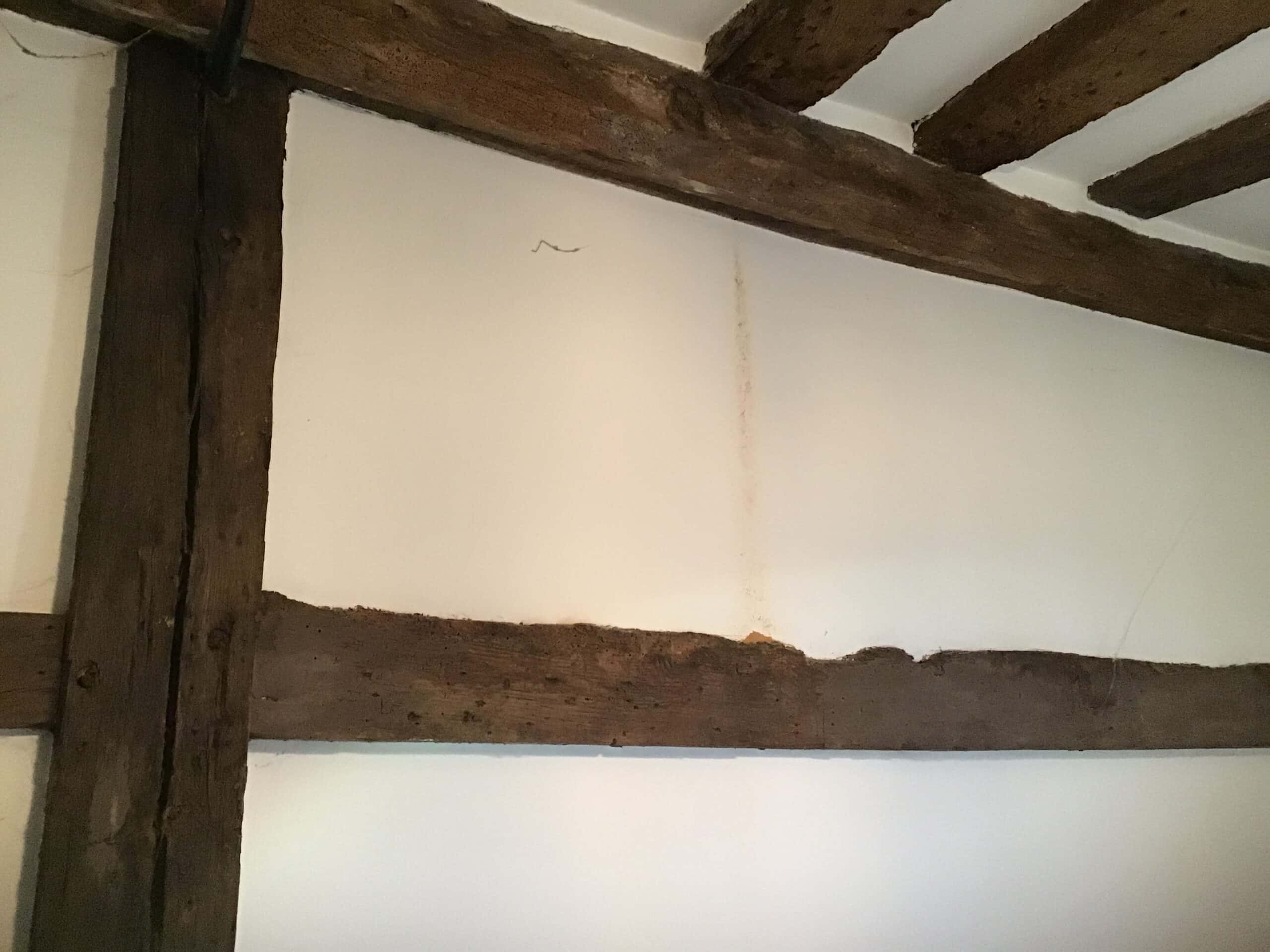

What attracts Woodworm?
The various species of woodworms prefer different types of wood. Some prefer softwood like Pine or Cedar. Others are more inclined to attack the hardwood of an oak or mahogany.
Woodworm typically prefers damp wood. It is easier for them to consume and provides better conditions for their eggs to mature.
Unprotected wood is also a playground for Woodworm. The lack of varnish means there are likely to be imperfections in the wood, creating the perfect conditions for their eggs to hatch. The unprotected wood also provides an easier option for newly hatched larvae to eat through.
The Impact of Woodworm
The impact of Woodworm can vary depending on the type of Woodworm attacking your wood and the size of the infestation.
If left unchecked, Woodworm can significantly reduce the strength of your timber, potentially creating structural problems for your property.
Eating away at your wood weakens the structural integrity, leading to more significant and expensive problems. Therefore, it is essential to act at the earliest sign of Woodworm around any load-bearing wood, such as rafters, joists and other structural timber.


How to prevent Woodworm
Woodworm are looking for damp conditions. Typically they can exist in wood with moisture content as low as 12%. So make sure you keep all timber surfaces as dry as possible.
It would be best to avoid any moisture build-up in areas like your kitchen or bathroom. To help with this, ensure your house is heated and well ventilated. Also, keep an eye on your loft for any moisture build-up.
Seal your wooden surfaces with a suitable varnish. It makes it harder for Woodworm to burrow into, and they don't like the toxins.
Where possible, make sure the furniture you buy is made from good quality hardwood. It is harder for Woodworm Larvae to live off and provides them with fewer nutrients.
If you buy furniture from an antique or second-hand shop, ensure there are no tell-tale signs of Woodworm.
If you encounter a problem, remove it as quickly as possible. Get rid of the affected furniture and replace any affected structural timber.
How to treat Woodworm
The treatment of Woodworm depends on a number of factors, and generally, there is value in getting a professional opinion. The variables involved in the infestation mean that you could deliver the wrong treatment and waste time. However, there are situations where it is possible to treat the problem yourself.
If you are convinced the problem is confined to one area, for instance, a single piece of furniture, then you can use one of the many available woodworm killers. Chemicals are involved, so you must follow the appropriate safety instructions.
As aforementioned, getting the proper treatment for the problem you face is essential. The Common Furniture Beetle or Death Beetle will be susceptible to these treatments. However, if it is suspected that you have House Longhorn Beetles, then it is advised that you get all timber in your house treated.
The Timber and Damp Team have many years of experience treating Woodworm. If you enlist our help, we will complete the following process:
- Complete a full inspection of the affected area, identifying the Beetle type, the problem's scale and the life-cycle stage.
- We will then provide you with a fully costed treatment plan and identify any additional support required to solve the source of the dampness.
Once we have approval, we will then progress with treatment which includes:
- Spray a water-based chemical that will eliminate the Woodworm Larvae on contact. This is generally sprayed into the boreholes. There are additional options like gel that can be used where appropriate.
- If identification reveals the Common Furniture Beetle or Death Beetle, our treatment will be confined to the affected area. If we uncover the House Longhorn Beetle, we will need to review all timber in the house.
- We will remove and replace any affected timbers whose structural integrity has been compromised.
Cost of Woodworm Treatment
There are three variations on our costs for our survey depending on your needs - find out more here.
The cost of the Woodworm Treatment will depend on the specifics of the problem and the proposed treatment.
Get in touch with our Woodworm Specialist
Our woodworm specialists have decades of experience successfully dealing with Woodworm and will be more than happy to undertake a survey.
Find out more about our team here and get in touch today for more information.


Need help? Book a survey at a time to suit your schedule
Our mission is to give you the peace of mind you deserve when it comes to waterproofing your house or business. Commission a survey from our team to assess your situation professionally.
